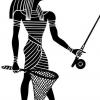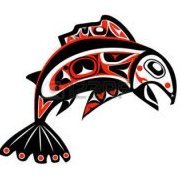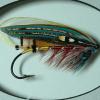-
Content Count
1,599 -
Joined
-
Last visited
Community Reputation
0 NeutralAbout shoebop
-
Rank
Advanced Member
- Birthday 06/28/1952
Previous Fields
-
Favorite Species
trout
-
Security
22
Contact Methods
Profile Information
-
Location
Springfield, MO
Recent Profile Visitors
14,495 profile views
-
shoebop started following Soft hackle question, From Casting for Recovery, Making soft salmon eggs and and 7 others
-
I can send an assortment. Let me know where to send them.
-
How would they be different from the ones you have been used to tying? A salmon egg is a salmon egg and if they have worked in the past...well I'm just sayin.
-
It gets this way every year at this time.
-
Excellent!
-
Amen!
-
Plus! you can add several different colors
-
I have serendipitously discovered a new way of creating mottled rubber legs. I have never seen anyone do this on a video or any other way so I will show youse guys how I did it. It is quite simple and saves a lot of money buying them from an online outlet or fly shop. If anyone has seen this done, I'm sure you will let me know. I bought some stretch cord from a fabric store. It is very cheap and you can find it at craft stores too. I think this was about 50 yards. That will make a lot of silli legs. 1. Get a turkey truss or use your bodkin (if you can affix it in your vise) or even a very large darning needle. Get it affixed horizontally in your vise. 2. Cut of about 10-12 inches of the stretch cord and start it on the end of the needle just like you start a thread on a hook by wrapping over itself. (Fig1) 3. Start twisting the cord clockwise in your fingers and start wrapping the twisted cord around the needle. Your turns should be touching and the tension should not be too tight. Attach your hackle clamp when you get close to the end so you can finish the last turns. It should look like photo #3 when you are finished. 4. Now get your permanent markers and make straight marks horizontally down the length of the twisted cord. (photo #4) You may use multiple colors if you wish as I have done here. You can let go of the hackle pliers at this point. Have fun! 5 release the hackle pliers and you will end up with something like these. (photo #5)
-
Well done!
-
When collecting wing feathers (like the large one in your photo), always try to get a pair...one from the left wing and one from the right. This way you can pair them up when tying in wings on your flies.🙂
-
Now you understand why they make different weight rods. An 8 wt was never intended to cast small trout flies especially if outfitted with line and leader used to cast heavier or weighted flies. But, never mind, I have a hard time casting slumpbusters with my 2 wt too.
-
I rarely buy commercial dubbing blends unless they have some particular needed quality that I cannot duplicate. I encourage you to experiment with your dubbing not to mention save a ton of money. You can go natural or synthetic or a blend of the two. Have fun and experiment. There is no downside to doing this IMHO.
-
It depends on the river and the hatches that are present. In some areas, it might be well known by the locals to have smaller insects in general so try to match the size to the general sizes available that river. Check with your local fly shop as to sizes. My sizes are the same as everyone here has already said.
-
Quill & Quail (Q&Q) hook-sz18 thread-Danville 70 denier tail- dun hackle barbs body- peacock quill hackle- quail
-
Have you guys seen this? A new twist on the mop fly fad. (2) Hair Band Fly (Mop Fly Alternative) - YouTube
-
Here's some spoon flies I tied a few years ago. Made with some fake fingernails I found in a bargain bin at the drug store. There are some lead wraps on the underside of the "spoons" that you can see in the second photo. FYI, If you have spinning blades on your "fly", it might be considered a lure in some states and therefore illegible to be fished in some sections of water deemed "fly only". As always, check you state and local regs. This spoon fly would be legal as a "fly".







